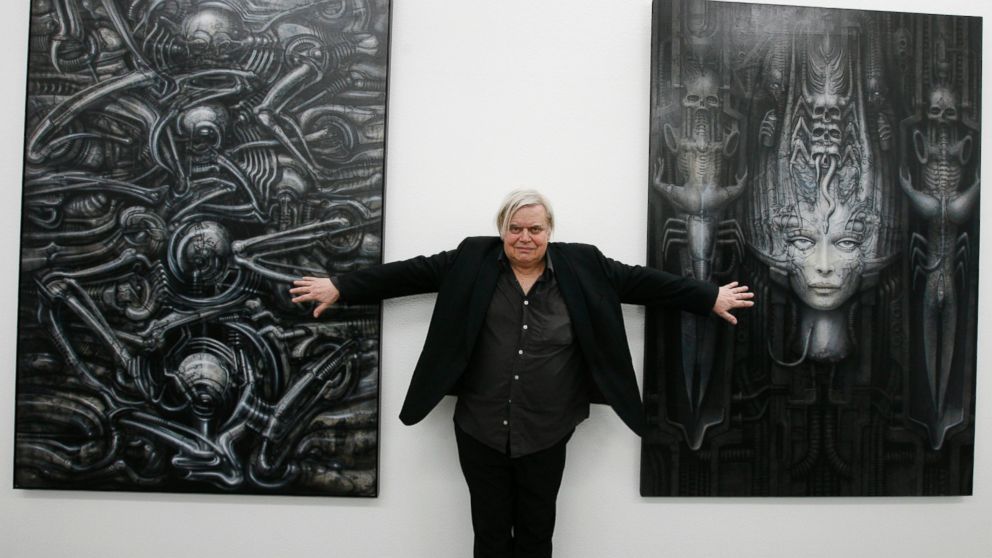 |
Swiss artist H.R. Giger, who designed the creature in Ridley Scott's
sci-fi horror classic "Alien," has died at age 74 from injuries suffered
in a fall, his museum said Tuesday.
Sandra Mivelaz, administrator of the H.R. Giger museum in Gruyeres,
western Switzerland, told The Associated Press that Giger died in a
hospital on Monday.
Giger's works, often showing macabre scenes of humans and machines fused
into hellish hybrids, influenced a generation of movie directors and
inspired an enduring fashion for "biomechanical" tattoos.
"My paintings seem to make the strongest impression on people who are,
well, who are crazy," Giger said in a 1979 interview with Starlog
magazine. "If they like my work they are creative ... or they are
crazy."
Born Hans Ruedi Giger on Feb. 5, 1940, in the southeastern Swiss town of
Chur, he trained as an industrial designer because his father insisted
that he learn a proper trade.
His mother Melli, to whom he showed a lifelong devotion, encouraged her
son's passion for art, despite his unconventional obsession with death
and sex that found little appreciation in 1960s rural Switzerland. The
host of one of his early exhibitions was reportedly forced to wipe the
spit of disgusted neighbors off the gallery windows every morning.
A collection of his early work, "Ein Fressen fuer den Psychiater" — "A
Feast for the Psychiatrist" — used mainly ink and oil, but Giger soon
discovered the airbrush and pioneered his own freehand technique. He
also created sculptures, preferably using metal, styorofoam and plastic.
Giger's vision of a human skull encased in a machine appeared on the
cover of "Brain Salad Surgery," a 1973 album by the rock band Emerson,
Lake and Palmer. Along with his design for Debbie Harry's solo album,
"Koo Koo" (1981), it featured in a 1991 Rolling Stone magazine list of
the top 100 album covers of all time.
Giger went on to work as a set designer for Hollywood, contributing to
"Species," ''Poltergeist II," ''Dune," and most famously "Alien," for
which he received a 1979 Academy Award for special effects. Frequently
frustrated by the Hollywood production process, Giger eventually
disowned much of the work that was attributed to him on screen.
The image of a brooding, mysterious artist was nurtured by Giger working
only at night, keeping his curtains permanently drawn and dressing
mainly in black — a habit he acquired while working as a draftsman
because it made Indian ink stains stand out less on his clothes.
While his work was commercially successful, critics derided it as morbid
kitsch. His designs were exhibited more frequently in "Alien" theme
bars, short-lived Giger museums and at tattoo conventions than in
established art galleries.
No comments:
Post a Comment